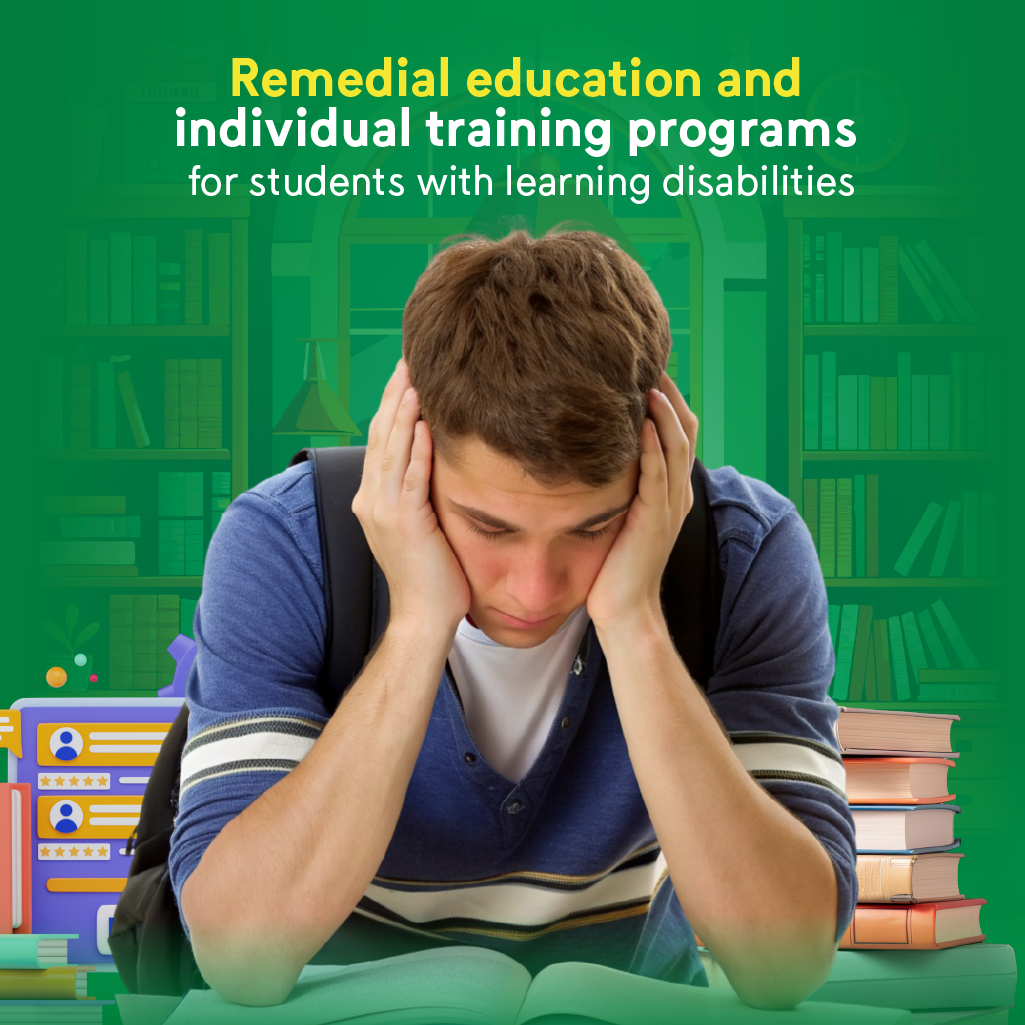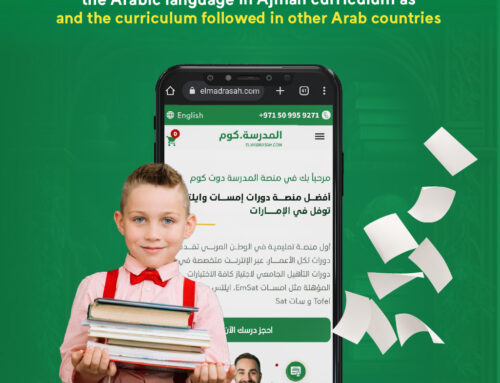
Students with learning disabilities are a group of students who face learning challenges related to reading, writing, arithmetic, verbal reasoning, memory, organization, social skills, or attention. They may have difficulties understanding, remembering, or organizing information appropriately. Learning difficulties vary from person to person. It may be due to multiple reasons, such as genetic, environmental, educational, or psychological factors
What is the definition of learning difficulties?
The definition of learning difficulties varies slightly and has been presented by many educational and health authorities, but the basis is that learning difficulties are a learning condition that affects the individual and makes him face difficulties in learning certain skills compared to other individuals of the same age, education, and cultural background.
Learning disabilities are a learning condition that includes multiple difficulties in acquiring and effectively using basic learning skills, such as reading, writing, arithmetic, thinking, memory, and organization. These difficulties are normal and persistent and negatively affect the individual’s performance at school or in his daily life, and often require special support and educational strategies. Dedicated to helping the individual overcome them and achieve educational success.
This definition highlights the importance of providing support and assistance to individuals with learning difficulties to enable them to succeed and achieve their full potential in learning and life.
What are the causes of learning difficulties?
Many causes may lead to learning difficulties in students, which teachers and specialists must be aware of to be able to identify individual needs and take appropriate interventions. Here are some common causes of learning difficulties:
- Genetic and biological factors: There may be genetic factors that play a role in the emergence of learning difficulties, such as differences in genetic makeup that affect neurological development or brain functions.
- Environmental factors: The circumstances surrounding an individual, such as home environment, education, and social relationships, can affect his ability to learn. For example, the child’s environment may be poor in educational resources or lack emotional and motivational support.
- Individual differences in neurodevelopment: Some people may experience learning difficulties as a result of differences in brain development or neurological function, affecting their language, arithmetic, or memory skills.
- Psychological or mental disorders: Some psychological disorders such as attention-deficit hyperactivity disorder, autism disorders, and anxiety disorders may affect an individual’s ability to concentrate and learn.
- Language learning difficulties: These include difficulties in understanding written language or oral language, and can be the result of differences in the development of language skills or language learning disorders.
- Educational imbalances: There may be imbalances in the educational system that affect an individual’s ability to learn, such as a large classroom or lack of educational support.
These factors interact together to shape an individual’s learning experience and may have diverse impacts on their ability to learn and their academic and social development.
What are remedial education and individual training programs for students with learning disabilities?
Remedial education and individual training programs for students with learning disabilities typically include the following:
- Early Intervention: Providing early assessment and intervention, usually before entering elementary school, to address educational problems before they worsen.
- Intensive Individualized Instruction: Providing individualized instruction tailored to meet the student’s individual needs, with an emphasis on basic skills in reading, writing, and mathematics.
- Life Skills Training: Develop the social and organizational skills needed to succeed in the school environment and daily life.
- Assistive technology: The use of technological techniques and devices to enhance the learning process, such as screen readers and speech processors.
- School-family coordination: Involving parents closely in the education process and planning appropriate support for the student.
The main goal of these programs is to help students with learning disabilities develop the academic and life skills needed to succeed in school and life.
What are the best practices that teachers should follow to support students with learning disabilities?
There are several effective practices that teachers can follow to support students with learning disabilities, including:
- Focus on Strengths: Recognizing and building on students’ strengths rather than focusing only on weaknesses, helps boost confidence and motivation.
- Use diverse educational strategies: Use a variety of educational methods and methods to take into account the different learning styles of students.
- Provide additional support and repetition of concepts: Provide additional opportunities for practice and repetition to reinforce understanding of key concepts and skills.
- Modifying tasks and assignments: Adapting tasks and assignments to suit different abilities and levels of students.
- Encouraging cooperation and social interaction: Creating a supportive learning environment that encourages social interaction and cooperation among students.
- Family Involvement: Work closely with students’ families to coordinate support provided at home and school.
- Continuous assessment and adaptation: Conduct ongoing assessments to track progress and adapt strategies and interventions accordingly.
Applying these practices systematically helps provide a supportive and inclusive learning environment for students with learning disabilities.
How can teachers evaluate the effectiveness of their practices to support students with learning disabilities?
There are several methods teachers can use to evaluate the effectiveness of their practices to support students with learning disabilities:
- Evaluating student performance: Monitoring students’ academic and behavioral progress using pre-and post-tests and other measures. This helps determine whether the strategies used are effective.
- Review data and records: Track student data and records, such as test scores and behavioral observations, to judge improvement.
- Direct Observation: Observing students during classes to determine the extent of their participation and engagement in learning.
- Obtaining Feedback from Students and Families: Obtaining feedback from students and their families about the effectiveness of the strategies used.
- Consultation with support team: Consult with members of the support team, such as therapists and counselors, to evaluate progress and obtain recommendations.
- Periodic review: Conduct periodic reviews of applied practices and programs and modify them based on the evaluation results.
By using these methods, teachers can get a comprehensive picture of the effectiveness of their practices and make the necessary improvements to better support students with learning disabilities.
How can the family and community contribute to supporting students with learning disabilities?
There are many ways that the family and the local community can contribute to supporting students with learning difficulties, including:
The role of the family
- Understanding the student’s needs: The family needs to understand the type of learning difficulty the student has and his strengths and weaknesses. This can be achieved by talking to the teacher or learning difficulties specialist or reading information about different types of learning difficulties.
- Create a supportive home environment: The home environment should be calm, organized, and stimulating for learning. The family can provide a quiet place to study, set a specific time to study each day and provide the necessary tools and materials for learning.
- Providing emotional support: Students with learning disabilities need a lot of emotional support from their families. The family can encourage the student to make an effort, celebrate his achievements, and support him in times of challenge.
- Participation in education: The family can participate in the student’s education by helping him with his schoolwork, reading books with him, and practicing his skills with him.
- Communication with the School: The family needs to stay in communication with the school about the student’s progress and needs. The family can attend teacher conferences, communicate with teachers regularly, and see the student’s education plan.
The role of society
- Spreading awareness: The community can contribute to spreading awareness about learning difficulties through awareness campaigns, workshops, and information materials.
- Providing Support: The community can provide support for students with learning disabilities through after-school support programs, counseling and guidance services, and additional learning opportunities.
- Creating an inclusive environment: The community can contribute to creating an inclusive environment for all students, including students with learning disabilities, by providing equal opportunities for learning and participation.
- Breaking the Stigma Barrier: The community can contribute to breaking the stigma barrier associated with learning disabilities by speaking out about this issue and supporting students with learning disabilities.
In addition to the role of the family and community, the school also plays an important role in supporting students with learning disabilities. The school must provide a supportive learning environment, provide special educational services, and collaborate with the family and community to ensure that each student receives the best education possible.
How to overcome temporary and persistent learning difficulties?
Overcoming learning difficulties, whether temporary or persistent, requires a set of strategies and measures that can be applied individually for each case. Here are some methods that can be used to overcome these difficulties:
- Identifying difficulties: The individual or student must accurately identify the difficulties he faces, by noting the challenges he faces while learning and studying.
- Searching for the necessary support: The individual must search for the necessary support from family, teachers, and specialists in learning and development, to obtain assistance and advice in dealing with difficulties.
- Using different learning strategies: You can try a variety of different learning strategies, such as different study techniques, drawing to illustrate concepts, or using educational programs available on the Internet.
- Organizing time and resources: The individual must organize his time and resources well to make the most of the time allocated for learning, by setting his priorities and allocating time to review and study regularly.
- Continuous communication with teachers and the school: Students should benefit from the support of teachers and the school and communicate with them regularly to receive the necessary help and guidance.
- Developing self-confidence: The individual must develop self-confidence and believe in his ability to learn and overcome difficulties, by setting realistic goals and working to achieve them.
- Relaxation and stress management: The individual must apply relaxation and stress management techniques to relieve stress resulting from learning difficulties and enhance concentration and performance.
These strategies can help an individual overcome learning difficulties, whether temporary or persistent and achieve success in their educational path and personal life.
How to Adapt curricula for students with learning difficulties?
Adapting curricula for students with learning disabilities requires multiple steps and strategies to ensure that their individual needs are met and their success in learning is met. Here are some methods that can be used to adapt curricula:
- Providing appropriate educational resources: Educational resources that suit the needs of students with learning difficulties must be selected and provided, such as picture books, interactive educational programs, and adaptive educational materials.
- Use a variety of teaching methods: A variety of teaching methods should be used that meet the needs of all students, including presenting information in visual, auditory and physical ways.
- Providing additional support: Students with learning disabilities may need additional support and extra time to understand course material and complete assignments.
- Provide multi-channel assessment: Multi-channel assessment should be provided to measure student progress, including appropriate tests, active classroom participation, artwork, and alternative projects.
- Use of innovative educational technologies: Innovative educational technologies such as interactive educational programs, mobile applications, and educational games can be used to make the learning process more enjoyable and effective for students.
- Cooperation with the family and community: We must cooperate with the family and community to provide the necessary support to students, and encourage continuous communication to monitor students’ progress and meet their needs.
Adapting curricula for students with learning disabilities requires joint efforts from the family, teachers, school, and community to ensure the provision of an educational environment that meets the needs of students and helps them achieve their academic and personal success.
The role of elmadrasah.com in helping students with learning difficulties
elmadrasah.com is a comprehensive e-learning platform that offers many resources and services that can benefit students with learning disabilities, their parents, and teachers. Some of the benefits that elmadrasah.com offers to students with learning disabilities include:
Rich and diverse educational content
- The platform provides rich and diverse educational content that suits the needs of students with learning disabilities at various academic levels.
- Content includes educational lessons in all subjects, as well as interactive learning activities, educational games, and e-books.
- Content is designed with different learning styles in mind, including visual, auditory, and kinesthetic learning.
Evaluations and previews to measure the level of learning
- The platform allows for assessments and previews to measure the level of student learning in various academic subjects.
- These assessments help identify a student’s strengths and weaknesses, enabling teachers and parents to design appropriate educational plans.
Auxiliary educational tools
- The platform provides many educational tools to assist students with learning disabilities, such as text reading programs, predictive writing programs, and speech recognition programs.
- These tools help students overcome their difficulties in reading, writing, and communication.
A safe and supportive learning environment
- elmadrasah.com provides a safe and supportive learning environment for students with learning disabilities, where they can learn and interact without fear of bullying or ridicule.
- The platform encourages cooperation and communication between students, teachers, and parents.
Possibility of distance learning
- The platform offers the possibility of distance learning, allowing students who face difficulties in attending traditional classes to continue their education.
- This is an especially important feature for students who have health problems or live in remote areas.
In conclusion, we must realize that students with learning disabilities possess enormous potential and unique talents, but may need additional support and guidance to achieve their full potential. Through understanding and effective support, we can create a comprehensive and personalized learning environment for these students, allowing them to successfully engage in learning and achieve success in Their academic and professional lives.















